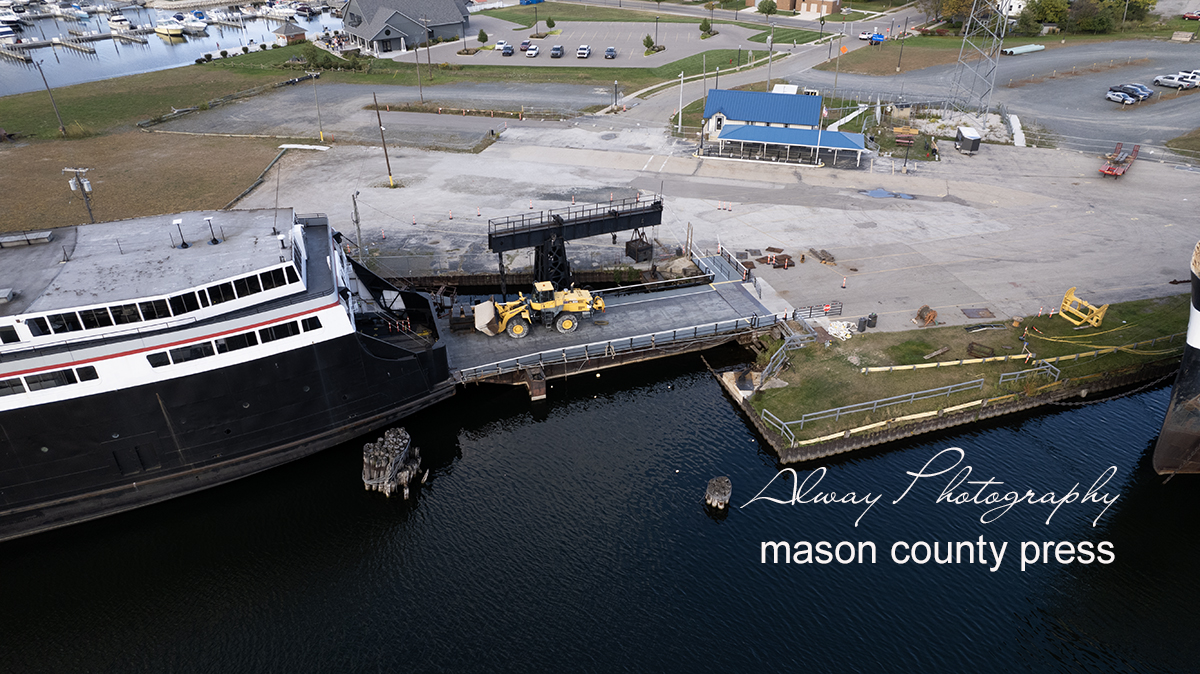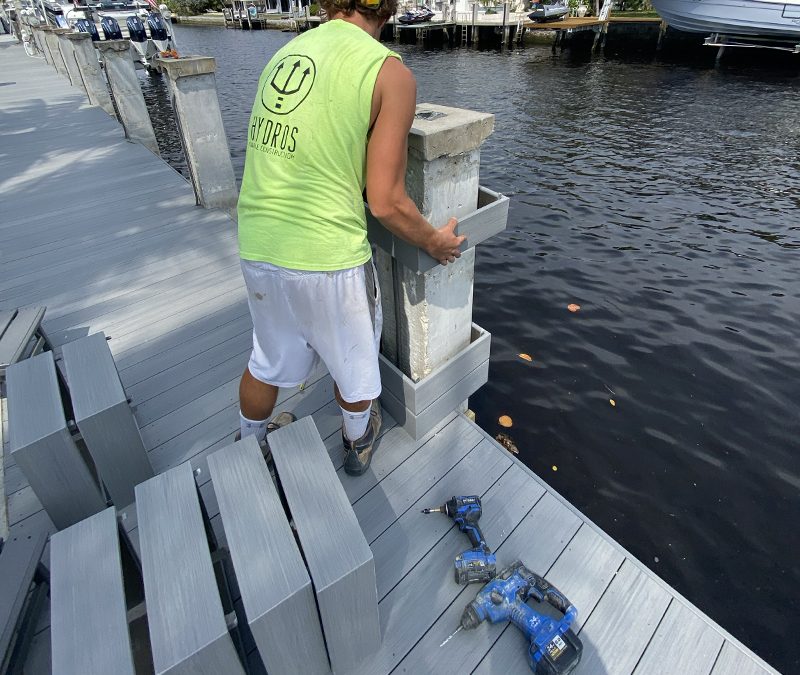How to Pick the Right Service for Your Dock Repairs
How to Pick the Right Service for Your Dock Repairs
Blog Article
Efficient Dock Repair Work Techniques: Making Sure Structural Honesty
Ensuring the structural stability of anchors via reliable repair work methods is paramount for the durability and safety of aquatic centers. Subsequently, picking the appropriate fixing products, such as corrosion-resistant alloys and composite products, is important for durability.
Analyzing Dock Damages
Evaluating dock damage is an essential very first step in guaranteeing the architectural honesty and safety of any docking center. This initial assessment includes a thorough inspection to recognize both concealed and noticeable damages. Key facets to check out consist of the dock's foundation, pilings, decking, and equipment. Each component has to be inspected for indicators of wear, rot, rust, or various other kinds of destruction that can endanger the architectural honesty.
Structural engineers or certified assessors commonly carry out these evaluations making use of specialized devices and methods. Underwater evaluations could employ sonar devices or from another location operated automobiles (ROVs) to spot immersed damages. Above water, visual examinations are enhanced by using moisture meters and various other diagnostic devices to reveal underlying issues not quickly visible to the nude eye.

Finding Repair Service Materials
Choosing the appropriate repair service materials is an essential action in the dock reconstruction procedure, one that directly influences the longevity and efficiency of the fixed structure. Material option have to be driven by aspects such as environmental conditions, load-bearing needs, and compatibility with existing dock parts. Wood is a standard selection for anchors due to its all-natural strength and aesthetic allure. Nonetheless, picking the right type of wood, such as pressure-treated lumber or normally rot-resistant species like cedar or teak wood, is critical to hold up against aquatic environments.
In addition to timber, composite materials are progressively popular as a result of their resilience and reduced maintenance demands. Compounds, generally made from a mix of plastic and timber fibers, offer exceptional resistance to rot, insects, and UV damages. For steel docks, choosing corrosion-resistant alloys such as galvanized steel or marine-grade aluminum is necessary to avoid corrosion and make sure structural integrity in saline water conditions.
Epoxy materials and marine-grade sealers are essential for repairing fractures and securing joints, giving a water-proof obstacle and improving the dock's general toughness. By thoroughly picking top notch materials, dock repairs can accomplish lasting results, consequently protecting against future degradation and making sure safe, reputable use.
Structural Support Techniques
Effective architectural support methods are important in making sure the stability and long life of dock repair work. One fundamental approach includes using steel or composite support bars (rebar) within concrete frameworks. Rebar gives additional tensile strength, avoiding fractures and distributing loads a lot more uniformly. This technique is especially reliable for docks exposed to hefty tons or rough environmental problems.
Another essential technique is the application of fiber-reinforced polymers (FRP) These products provide high strength-to-weight ratios and outstanding resistance to deterioration, making them suitable for enhancing wooden or concrete docks. FRP can be used in strips or sheets and bound with epoxy materials to boost structural honesty.
Supporting and anchoring systems also play an essential function in architectural support. Cross-bracing, using metal or wooden light beams, can combat side forces, decreasing guiding and movement. Anchoring systems, such as helical piers or driven heaps, give a stable structure by transferring loads to much deeper, more stable soil layers.
Finally, the integration of load-distribution plates can help disperse weight more uniformly throughout the dock's surface area, minimizing local stress points. These methods collectively make sure that anchors continue to be robust and risk-free, efficient in standing up to the rigors of their functional atmosphere.
Advanced Fixing Methods

Another innovative strategy involves undersea welding, which enables repair work to be conducted without the need to dewater the area. This technique is especially helpful Home Page for addressing architectural problems in submerged dock parts, making certain marginal disturbance to operations. Boosted welding techniques, combined with robotic systems, deliver accuracy and reliability, therefore expanding the life expectancy of the dock.
Furthermore, cathodic defense systems are carried out to stop corrosion in metallic dock frameworks. By utilizing sacrificial anodes or amazed present systems, these strategies efficiently minimize the electrochemical processes that lead to product damage.
Lastly, progressed tracking innovations, such as structural wellness surveillance (SHM) systems, supply real-time information on the condition of dock structures. These systems enable proactive upkeep and prompt treatments, eventually guaranteeing the long-term structural honesty of the dock.
Upkeep and Avoidance
Maintenance and avoidance are fundamental principles that underpin the long life and safety and security of dock frameworks. Routine inspections are extremely important, enabling early discovery of wear and tear, prospective weaknesses, and ecological effects. A positive technique, including regular look for deterioration, rot, and structural changes, alleviates pricey repair services and lengthens the dock's operational life.
Preventive actions ought to consist of using protective coatings to metal elements to safeguard against rust and making use of cured wood to resist degeneration. Additionally, ensuring proper water drainage and air flow can avoid water build-up, which is a typical cause of structural destruction. Including quality materials and adhering to manufacturer guidelines during building and construction and repair service phases additionally play vital duties in boosting toughness.

Training personnel in dock upkeep best practices makes sure consistent application of preventive procedures. Leveraging technological developments, such as drones for inspections and sensors for real-time surveillance, can additionally enhance upkeep efforts. By focusing on maintenance and prevention, dock owners can make sure architectural stability, operational safety and security, and economical administration over the dock's lifespan.
Verdict
Finally, maintaining the structural stability of aquatic centers demands detailed dock repair methods. Detailed examinations making use of advanced tools uncover both noticeable and hid damages, while the selection of proper repair work materials improves toughness. Implementing structural reinforcement methods addresses stress points efficiently. Advanced fixing strategies, paired with normal maintenance methods, ensure the dock remains operational and risk-free under diverse ecological conditions. Taking on these strategies significantly lengthens the life-span and performance of marine framework.
Ensuring the architectural honesty of docks through effective fixing methods is paramount for the longevity and safety and security of aquatic facilities.Picking the proper fixing materials is a pivotal step in the dock repair process, one that directly influences the longevity and performance of the repaired structure.Reliable structural support techniques are essential in making sure the security and longevity of dock repairs. By focusing on upkeep and prevention, dock proprietors can guarantee structural stability, functional safety, and affordable monitoring over the dock's lifespan.
In conclusion, maintaining the architectural honesty of aquatic centers necessitates extensive dock repair techniques.
Report this page